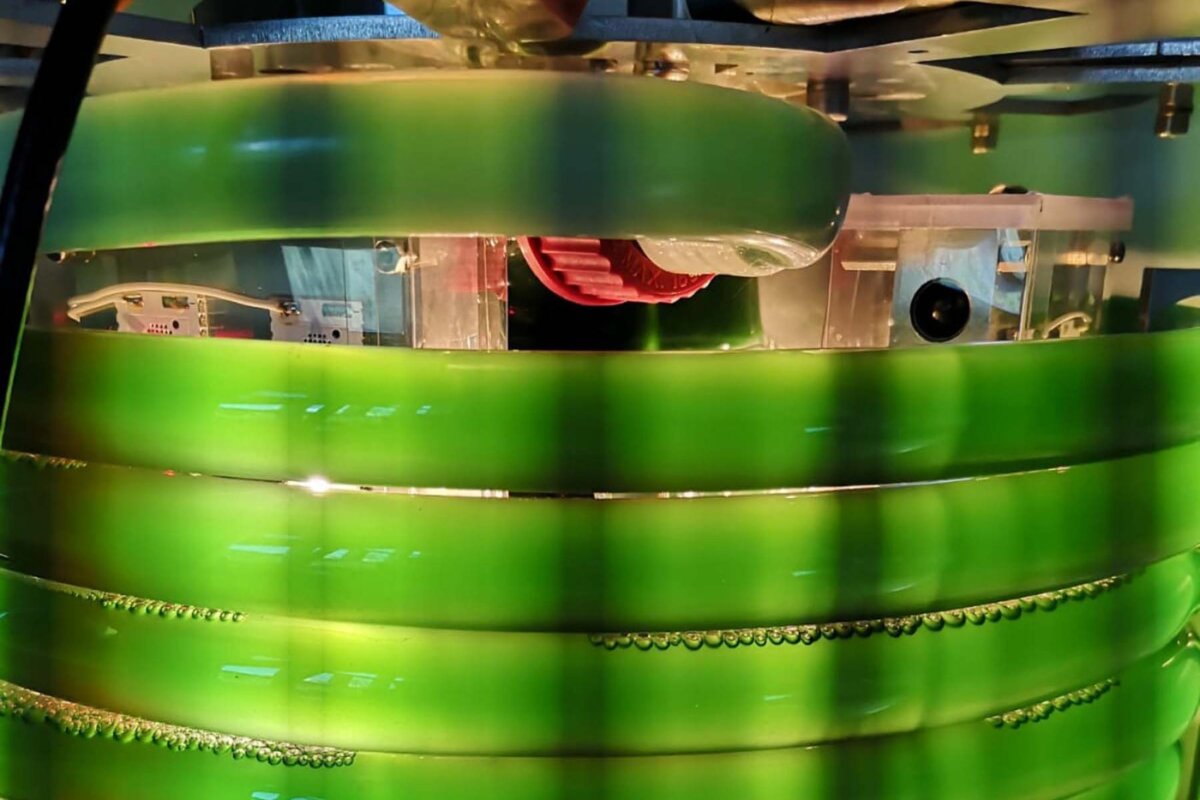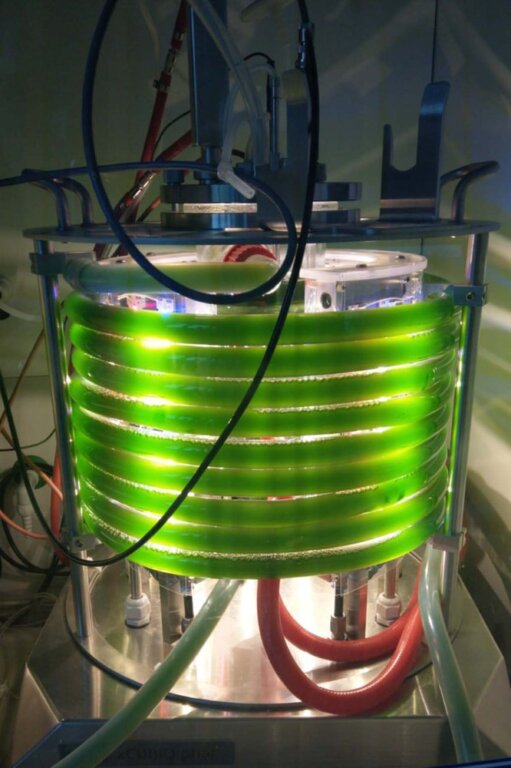At the Cluster of Excellence Unifying Systems in Catalysis (UniSysCat) at Technische Universität Berlin, scientists are researching the future of ‘green chemistry’. The aim is to conserve resources, work energy-efficiently and avoid waste.
Greenopolis looks like modern science fiction: a factory city with trees growing on the roofs and no waste. Only clean water flows out of a beak-shaped drainage pipe into the ditch that surrounds the city. This is how the Unifying Systems in Catalysis (UNISYSCAT) Cluster of Excellence at the Technical University of Berlin presents the basic principle of its research in a comic strip: learning from nature to ensure the quality of human life.
In the short introductory film that the Cluster of Excellence is showing in the Humboldt Lab’s inaugural exhibition After Nature, this principle is explained using the example of photosynthesis: plants absorb carbon dioxide and water and convert both into oxygen and sugar with the help of light energy – substances that other organisms need to live. An ingenious concept that utilises natural solar energy and produces no waste. In this way, plants counteract the man-made climate crisis by absorbing and converting the greenhouse gas carbon dioxide. The result is plant-based food for animals and humans and plenty of wood, which is a safe and useful way of storing solar energy.
The UniSysCat scientists want to understand what happens during such processes, in which many individual chemical reactions build on each other. ‘The next step is then to recreate such structures and see what changes when we turn certain dials,’ explains Holger Dobbek, Professor of Structural Biology and Biochemistry at Humboldt-Universität and one of the spokespersons for the Cluster of Excellence. The aim is to take natural processes such as photosynthesis as an example in order to be able to produce new compounds with light and, for example, to produce fuel from light with carbon dioxide and water. ‘What we are doing is like reinventing nature all over again,’ says cluster spokesperson Arne Thomas, Professor of Functional Materials at the Technical University of Berlin.
Green chemistry: conserving resources and bringing products into a cycle
Emulating nature is certainly good, but improving it sounds like an insane task. And it is. After all, the great role model not only operates a huge, global network of photosynthesis factories with its forests, it also has a certain time advantage. ‘Plants have built up this apparatus over millions of years,’ says cluster spokesperson Matthias Drieß, Professor of Organometallic Chemistry & Inorganic Materials at the Technical University of Berlin. Humans don’t have that much time, the chemist emphasises. ‘If we wait that long, we will be stuck with the gigantic quantities of man-made climate killer gas carbon dioxide with devastating consequences.’ This is because the ongoing climate change and the production of plastic and toxic waste products mean that humanity is working towards the slow but certain destruction of the Earth.
Plastics and other polymers come from the chemical industry; they pose a huge waste problem. This is another reason why the chemical industry needs to become greener, but also more ethical, i.e. to address the impact of chemical products on the environment, demands Matthias Drieß.
Millions of tonnes of plastics are produced every year without a comprehensive solution for recycling them as urban raw materials. This is where chemistry comes in, emphasises the Cluster of Excellence spokesperson: ‘We need to produce polymers that we know can be elegantly broken down into their basic components again.’ This is how nature does it. It produces something and then breaks it down into its individual parts again – without producing waste.
The term ‘green chemistry’ stands for sustainability. This means: ‘Everything becomes, passes away and is part of a reliable ecosystem. It fits into a larger whole – without there being any waste materials that are ecologically questionable,’ explains Drieß. Another principle of green chemistry is to conserve resources by using substances that occur frequently, explains Arne Thomas. It is also about using energy as sparingly as possible. It is true that nature itself is sometimes wasteful in terms of energy consumption, says Holger Dobbek. But this only applies to areas where there is enough of it. Bacteria, for example, are an example of maximum energy efficiency. They manage with an absolute minimum.

